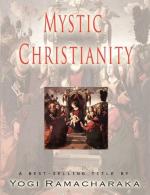Let us now turn to the second account of the Virgin Birth, in the Gospels—the only other place that it is mentioned, outside of the story in Matthew, above considered. We find this second mention in Luke 1:26-35, the verses having been quoted in the first part of this lesson.
There has been much dispute regarding the real authorship of the Gospel commonly accredited to Luke, but it is generally agreed upon by Biblical scholars that it was the latest of the first three Gospels (generally known as “the Synoptic Gospels"). It is also generally agreed upon, by such scholars, that the author, whoever he may have been, was not an eye witness of the events in the Life of Christ. Some of the best authorities hold that he was a Gentile (non-Hebrew), probably a Greek, for his Greek literary style is far above the average, his vocabulary being very rich and his diction admirable. It is also generally believed that the same hand wrote the Book of Acts. Tradition holds that the author was one Luke, a Christian convert after the death of Jesus, who was one of Paul’s missionary band which traveled from Troas to Macedonia, and who shared Paul’s imprisonment in Caesarea; and who shared Paul’s shipwreck experiences on the voyage to Rome. He is thought to have written his Gospel long after the death of Paul, for the benefit and instruction of one Theophilus, a man of rank residing in Antioch.
It is held by writers of the Higher Criticism that the account of the Virgin Birth was either injected in Luke’s narrative, by some later writer, or else that Luke in his old age adopted this view which was beginning to gain credence among the converted Christians of pagan origin, Luke himself being of this class. It is pointed out that as Paul, who was Luke’s close friend and teacher, made no mention of the Virgin Birth, and taught nothing of the kind, Luke must have acquired the legend later, if, indeed, the narrative was written by him at all in his Gospel.
It is likewise noted that Luke also gives a genealogy of Jesus, from Adam, through Abraham, and David, and Joseph. The words in parenthesis “as was supposed,” in Luke 3:23, are supposed to have been inserted in the text by a later writer, as there would be no sense or reason in tracing the genealogy of Jesus through a “supposed” father. The verse in question reads thusly: “And Jesus himself began to be about thirty years of age, being (as was supposed) the son of Joseph, which was the son of Heli,” etc. Students, of course, notice that the line of descent given by Luke differs very materially from that given by Matthew, showing a lack of knowledge on the part of one or the other writer.
On the whole, scholars consider it most remarkable that this account of the Virgin Birth should be given by Luke, who was a most ardent Pauline student and follower, in view of the fact that Paul ignored the whole legend, if, indeed, he had ever heard of it. Surely a man like Paul would have laid great stress upon this wonderful event had he believed in it, or had it formed a part of the Christian Doctrine of his time. That Luke should have written this account is a great mystery—and many feel that it is much easier to accept the theory of the later interpolation of the story into Luke’s Gospel, particularly in view of the corroborative indications.




